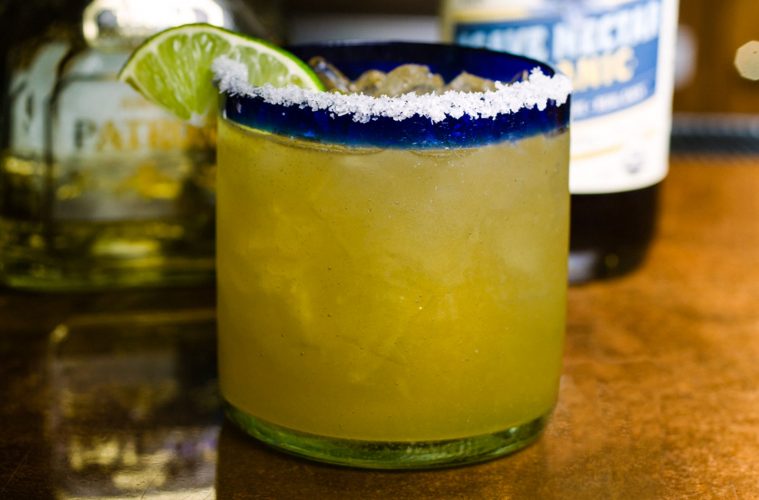The quality of your cocktail is as good as the ingredients you put in it. This may sound like common sense, but most of us don’t call for a particular brand of tequila when we order a margarita or shot. And not all tequilas are created equal. “Tequila has changed more in the last 30 years than it has in the previous 100,” says Daniel Gilmore, general manager at Agavé Mexican Bistro in Newburyport, which has over 125 premium tequilas from which to choose.
Tequila is made from blue agave, which is often mistaken for a cactus or aloe plant. Gilmore says agave adds a fresh, sweet, grassy flavor to tequila. The heart of the agave, called the piña, is slowly roasted before being mashed by a stone wheel to extract agave juice. After distillation, the tequila is either bottled or aged to create different expressions: blanco, reposado, or añejo (see sidebar). The best tequilas are 100 percent blue agave, which means they don’t contain caramel coloring or sugar additives. Gilmore’s favorites include Clase Azul, Casamigos, and Fortaleza reposados, Don Julio 1942, Milagro Select Barrel Reserve, and the Casa Noble selections.
Despite its reputation as a hangover-inducing shot, tequila is one of the few spirits rooted in authenticity with highly regulated production methods. Just like champagne can only come from the Champagne region in France, true tequila must be made in a few designated regions in Mexico. (Don’t be fooled by the worm in the bottle—that’s actually mezcal, tequila’s smokier cousin.) As more quality aged tequilas make their way across the border, aficionados are treating the tequila more like whiskey and sipping it.
Another popular way to drink tequila is on the rocks with a squeeze of lime, which Gilmore says highlights the natural citrus flavor of many types of tequilas. If you don’t know your reposado from your añejo, Agavé offers tasting flights of various types of tequilas. “This allows both newcomers and seasoned tequila drinkers to experience the aging process, the differing flavors available, and how they mellow with barrel aging,” Gilmore says.
Americans love tequila: The margarita is the top-selling cocktail in the country. It’s the perfect balance of tart and sweet with a touch of earthiness from the tequila. The bartenders at Agavé make several thousand each week during the summer months. “Currently our bar menu has 16 signature margaritas and seven special seasonal margaritas that change monthly,” says Gilmore.
At its best, a margarita uses fresh ingredients to showcase the flavors of the tequila. Skip the sugary artificial mixes and keep it simple with just-squeezed lime juice and agave nectar, a natural sweetener that is an obvious complement to tequila. Try Agavé’s flavorful twist on a classic 1900s recipe from Bertha’s near Mexico City—it’s the way a margarita should be.
El Patrón Margarita
2 oz. Patrón añejo
½ oz. Patrón Citrónge
1 oz. freshly squeezed lime juice
½ oz. agave nectar
Shake ingredients with ice and strain into a rocks glass with ice and half a salted rim.
SIDEBAR
A Guide to Choosing the Right Tequila
Blanco or Silver is tequila in its purest form, clear and un-aged. A great choice for margaritas, blanco tequila is the clearest expression of tequila’s earthy, sweet flavor.
Reposado tequila is rested from 2 to 11 months in wood barrels. This gives the tequila a golden hue and mellower flavor, perfect for a smooth shot.
Añejo tequila is aged for at least a year in barrels, making similar to whiskey or Cognac in color and complexity.
Extra Añejo tequila is aged a minimum of three years and best served neat or on the rocks.
Mixto or Gold tequila only has to be 51 percent blue agave so the rest of the ingredients are additives that can cause headaches—you’ve been warned!

